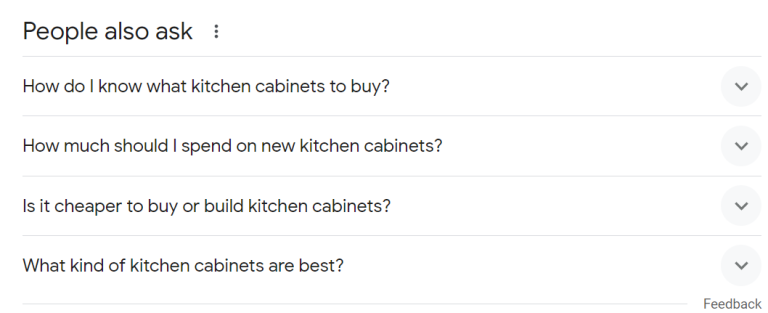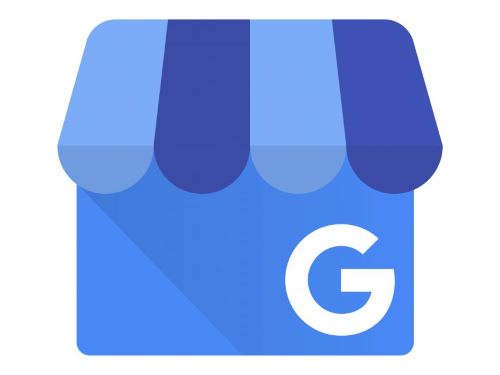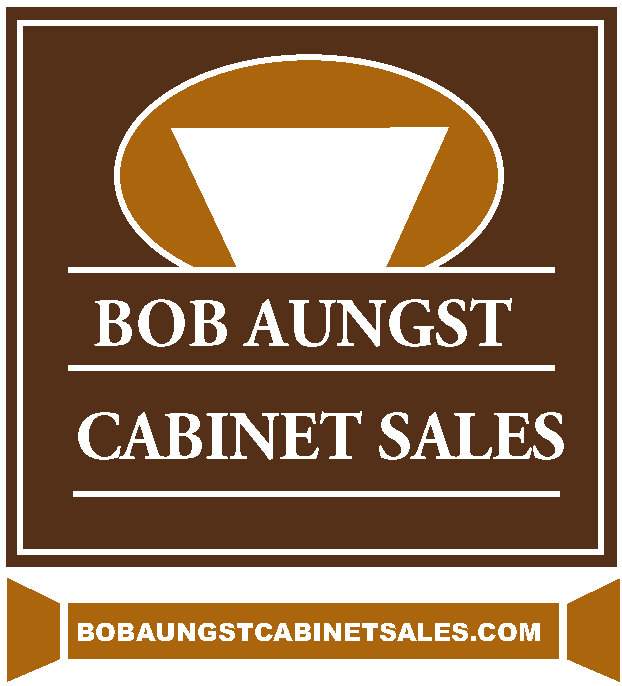Are you a beginner at Search Engine Optimization (hereafter called SEO)? If you have a website for your business, you’ve read that you need SEO to get your website found by the search engines.
You don’t have to be a techie expert to optimize your website so Google can find it. This article is intended to get you on your way. It is not a definitive treatise. A search for SEO online will bring up hundreds – if not thousands – of articles telling you want you need to do.
Here at Bob Aungst Cabinet Sales, we’ve learned some things and want to share them with you so your potential customers can find your business.
What is SEO?
SEO is the process used to optimize the content of your website so it can become easily findable and more relevant to user search queries. Simple to define, not so simple to accomplish.
Keyword Research
The foundation of SEO is keyword research. And no, this isn’t necessarily easy, or one that takes the least amount of time. However, if you have a solid keyword list, you’re off to a good start for the rest of your SEO work.
And if you really want to be thorough, read the step-by-step guide to keyword research. At Bob Aungst Cabinet Sales, we use Yoast as our SEO guide.
Your keywords must be relevant to your business. They fall into two categories:
(1) Short-tail or focus keywords, and
(2) Long-tail keywords
Focus keywords: These are shorter phrases, consisting of one to three words. They are broader and more general. For example, “kitchen cabinets” or “best kitchen cabinets” are short-tail keywords. These general keywords are much more competitive and harder to rank for.
Long-tail keywords: Long-tail keywords are descriptive, multi-word search terms. They target more specific search queries and may be easier to rank for. Because they are more focused, they usually have less search volume compared to the focus keywords. Examples of long-tail keywords might include “painted maple kitchen cabinets” or “best stained Cherry kitchen cabinets.”
How to Choose Keywords
Volumes have been written about how to choose keywords. Our article is a general outline to get you started, and we’re not going to go into lots of detail. However, our goal is to be helpful, so here are some things to consider when choosing keywords.
Start out by making a list of possibilities using the following.
- Target audience. What type of customer do you want to attract to your site? What problems do they have you can help them solve?
- Your products. List each of your products and services. Then add multiple words that describe it.
- Synonyms. Think of different ways of saying any of the keywords on your list.
- Related words. Type your keyword possibilities into Google, and suggestions will appear in a dropdown menu. These suggestions are based on search trends and can be a great way to find long-tail keywords that people are actually searching for.

Keyword Research Tools to Help with SEO
After you’ve made your list of possibilities using the suggestions outlined above, you can narrow down your list using a keyword research tool. We typed “best keyword research tools” into Google, and here’s the result. And this isn’t all of them by a long shot. We recommend picking one and determining if you find it easy to use and get results you can use.
- Google Search
- Google Trends
- Moz Keyword Explorer
- QuestionDB
- Ahrefs
- Semrush
- Spyfu
(One caveat we have to include for beginners is don’t start with Google AdWords. Even though Google says it’s a free keyword research tool, it’s all tied into their ad campaigns. Unless, of course, you want to start an ad campaign on Google, then go for it. Otherwise, some of the other tools are much more user-friendly and straight-forward.)
What do SEO Experts Say?
SEO experts recommend starting the optimization process with the content on your website. That’s because SEO is all about using the keywords you decided on that will get you seen on Google.
Write High-Quality Content
What exactly makes content high-quality?
High-quality content is content that provides value to your audience. It answers their questions, solves their problems, and satisfies their needs. It’s not just keywords stuffed into a page. It’s well-researched and well-written.
SEO-friendly content should be short and sweet. Add subheadings so readers grasp the main message of your content.

The way you format your content affects two key factors: readability and the user experience (UX), two Google ranking factors.
Readability is how easy it is for people to understand your content. User experience (UX) is how people feel when they interact with your content. Both of these factors influence how long people stay on your page, how they engage with your content, and whether they share it with others.
Include Keywords in Headings and Sub-headings
Search engines look at where you use keywords on your site. Further, some areas are prioritized over others.
Use your keywords in the headings and sub-headings throughout the site, but especially in your blog articles.
Also use keywords in the body text of your web pages. And be sure to incorporate them in a natural way.
Images and Video Should Be Part of SEO Strategy
Your website content is more than words only, and our business is very image-specific.
What does this mean to you and your SEO efforts? It means visual content is very important for SEO. Here are a couple of tips.
- Rename image files to include your target keyword or phrase
- Use images that are relevant to your audience
- Check the file size and reduce the file size to boost page speed (page speed is a Google ranking factor).
- Use alt text for images. Alt text is the short text that describes an image to describe images clearly
- Add subtitles to videos
- Include a transcript for videos
- Embed links in videos that point back to the relevant page on your site
Use Internal and External Links
Incorporating internal and external links can make a difference in your SEO. Every time you publish something new, include relevant internal and external links.
Internal links point to other pages on your site. They help with SEO by increasing the authority and relevance of your pages, a factor Google ranks for. In addition, they help with visitor retention, another factor Google uses when ranking, by providing more information.
External links, on the other hand, point to other sites. They help you by building credibility when you reference other authoritative sources. (Tip: make sure you use the “open link in new window” setting with external links. You don’t want your visitors to leave your site and have the return window closed!)
Title Tags and Meta Descriptions can Boost SEO Results
The title tag is the title of a webpage and appears in both the browser tab and in search results. The meta description provides a summary of a webpage and is used by search engines to create the descriptive text in a search result (sometimes called a “snippet”).
Here’s an example of what a title tag and a meta description looks like in Google.

The title tag is “Beyond the Kitchen Work Triangle”. The Meta description is the text under the title: “Homeowners who are planning a kitchen renovation have usually heard of the “work triangle”, the traditional approach to the kitchen layout.” The primary keyword in this article is “kitchen work triangle.”
And both the title tag and meta description can influence how likely a searcher is to click on your result. They help searchers understand what your page is about.
You should use your target keyword in both title tag and meta description. Then, write meta descriptions that summarize what the page is about.
Add FAQs Based on “People Also Ask Questions”
The “People also ask” (PAA) section is a Google feature that displays questions (and quick answers) related to a searcher’s query.
We asked Google “how to buy kitchen cabinets” and the PAA section showed this:

These questions are valuable because they’re questions people actually search for. Having this information makes it much easier to tailor your content and keywords.
Final Piece to the SEO Puzzle for Beginners

Google Business Profile, formerly known as Google My Business, lets you manage how your business appears on Google Search and Maps. You get to control your business information online, thus making it easier for potential customers to find you. Another benefit – it’s free!
What can a Google Business Profile do to get your business found in search? Quite a bit, actually.
- Increase visibility: An optimized profile can improve your ranking in local search results. By “optimized” Google means have your NAP (name, address and phone number) verified, include your website address, business hours, customer reviews and photos. You would be amazed at how many business profiles come up in search with no information included, other than their name that Google found. It isn’t difficult!
- Add to Your Credibility: Having a complete and informative profile with positive reviews builds trust with potential customers.
- Increase customer engagement: Use your Profile to post updates, offers, and events to keep your business in front of existing and potential customers.
Google is very helpful and provides instructions to set up and optimize your Google Business Profile.
What our SEO Plugin Looks for
The WordPress SEO plug-in we use at Bob Aungst Cabinet Sales reviews and analyzes our content. Here’s a list of items they check for.
- External links
- Keyphrase in Images
- Images
- Internal Links
- Keyphrase in Introduction
- Keyphrase density
- Keyphrase distribution
- Keyphrase in SEO title
- Keyphrase length
- Keyphrase in meta description
- Meta description length
- Previously used keyphrase
- Keyphrase in slug
- Keyphrase in subheading
- Text length
- Title
- SEO title width
Conclusion
SEO is something for the long term. It’s not an overnight fix. Optimizing your website and content for SEO purposes takes time and effort. However, the good news is that you don’t have to check everything off your SEO list at once. Meaning that you can work on one of the items mentioned in this article each day to get SEO payback.
Bob Aungst Cabinet Sales is a full-service rep agency with the goal of matching kitchen designers and remodelers with the cabinet manufacturers best suited to their business’ style and clientele. Owner Bob Aungst III represents Brighton Cabinetry, US Cabinet Depot, Integrity Cabinets and StyleCraft Luxury Custom Cabinets.

